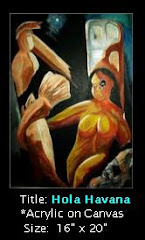In 1958, although the United States was technically at peace, the cold war raged on. Hundreds of thousands of military personnel (and their families) were stationed around the globe, often in remote places like Adak, Alaska and Diego Garcia.
In order to bring our troops a slice of home, and some holiday cheer, for the better part of two decades Hollywood had been providing free, exclusive entertainment to the troops, via AFRS radio shows, records, and USO road shows.
While USO road shows were still being mounted, getting top-notch entertainment to the hundreds of military bases and outposts was obviously a challenge.
So the idea of putting together a filmed holiday special for the troops – produced by the USO (with assistance from the ABC, NBC, and CBS television networks and contributions from just about every actor’s guild in Hollywood) was born.
Reportedly more than 700 copies of the film were distributed to the armed forces.
Although considered a`Christmas gift’ for the troops, this 90 minute variety show only features a couple of Christmas songs. In recent years this 90 minute show has been repackaged and sold on DVD as Bing Crosby’s White Christmas All-Star Show – which quite honestly is a bit of a stretch.
Crosby appears, about mid-way through the show to sing White Christmas, but is hardly the host.
Most of the entertainment was the sort of fare that the folks back home were enjoying year-round.
- Milton Berle, Bob Hope, and Danny Thomas doing comedy monologues
- Frankie Laine, Jimmy Rogers, and Tony Martin singing their signature songs
- Songs from Lena Horne & Gale Storm
- Benny Goodman
- Ray Bolger in a comedic dance
- Marge & Gower Champion Dancing
- Van Cliburn in a short piano performance
- Jack Benny, George Burns, and Jimmy Stewart in a Vaudeville skit
With holiday greetings from the stars to the troops interspersed. You’ll also find appearances by Dinah Shore, Dick Shawn, Jane Russell, Gregory Peck, Kim Novak, Shirley Maclaine and many, many more.
The highlight (for me at least) comes near the end, when Danny Kaye and Louis Armstrong do a duet of `When The Saints Go Marching In’.
Movie buffs will recognize this number (and arrangement) from the movie `The Five Pennies’, which starred Kaye and featured Armstrong.
This rendition, which was done before the movie was filmed, was apparently a very successful rehearsal for one of the most memorable moments of that film.
Follow the link to watch this show on YouTube.
Bing Crosbys White Christmas - All Star Show [Full DVD]
As an added bonus, Danny Kaye and Satchmo teamed up several times over the years to perform `The Saints’, including this version from Danny’s TV show (1963-1967).
Enjoy!































